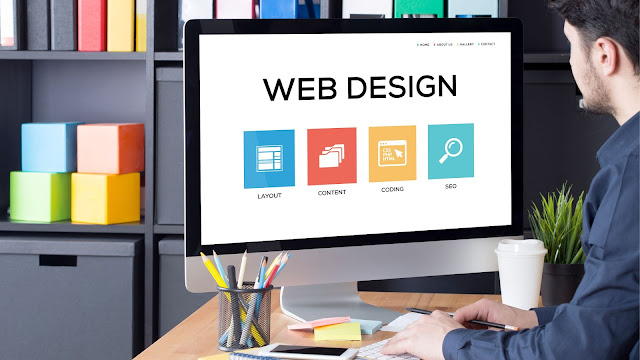
With the growing influence of technology, every business is looking for ways to create an online presence.
To make your mark on this digital space you need to have a website that is innovative and unique.
This is where the role of web designing becomes pivotal.
So, What is Web Designing?

Is it just about putting your website together?
Well, web designing goes beyond that.
It includes all the steps and activities involved in the creation of a website.
From understanding user behavior to planning, designing, and developing a website, everything comes under web designing.
For creating a powerful website, you need to get into each aspect of it and understand its importance.
One thing you should always keep in mind is that creating a website is much more than just knowing programming languages or being good at coding.
It requires one to be creative and understand user behavior as well so that they can work together to create a powerful platform for your business.
You can also visit webteq.com.my to design your beautiful website.
Types of Web Designing

Web design is divided into different categories. The most common are static, dynamic, responsive, and e-commerce web design.
- Static web design is the simplest type of web design, and usually consists of a few basic pages with text and images.
- Dynamic web design is more complex, and allows for more interactivity between the user and the website.
- Responsive web design is a newer type of web design. It allows for websites to be viewed on devices of all different sizes, from smartphones to desktop computers.
- eCommerce web design is a specialized type of web design that allows for online transactions to take place.
How is Web Designing different from Website Development?
When it comes to creating a website, there are two main approaches: web design and web development.
Both are important, but they are very different from each other.
Web design is all about the look and feel of the site. It’s the visual elements and the user experience.
A good web design will be visually appealing and easy to use.
Web development, on the other hand, is all about the code that makes the site work.
It’s the back-end programming that makes everything function. A good web developer will be able to create a site that is fast, secure, and easy to use.
So, which one is right for you?
It depends on your skills and interests.
If you’re good with design and have a creative flair, web design may be the right path for you.
Web development is a better fit if you are technically minded and enjoy coding.
Components of Web Designing

Web designers use a variety of tools to create a website.
These tools include text editors, graphics programs, and web development frameworks.
They need to have a good understanding of HTML, CSS, and JavaScript. They also need to be familiar with user experience (UX) design.
- The Foundations: A web designer must have a strong foundation in the basics of web design. This includes knowing how to code in HTML, CSS, and JavaScript. A web designer should also have a good understanding of user experience (UX) design and user interface (UI) design.
- Navigation and Layout- The navigation and layout of your website are important components of web design. The navigation should be easy to use and understand, and the layout should be easy on the eyes. A good navigation system will help visitors find what they are looking for on your website quickly and easily. A good layout will make your website more visually appealing and easier to read.
- Visuals: A web designer must be able to create visuals that are appealing to users. This includes both the overall look of the website and the individual elements on the page. A web designer should have a good eye for colour, typography, and layout.
- The Structure: A web designer must have a strong understanding of the importance of structure. There are many different types of websites, and a web designer needs to be able to recognize those differences in how they were built.
- Color- Color is one of the most important aspects of web design. The colors that you choose for your website can have a big impact on how visitors perceive your brand. Different colors can evoke different emotions, so it’s important to choose wisely. For example, blue is associated with trustworthiness and stability, making it a good choice for financial or healthcare-related websites. Green is associated with nature and growth, making it a good choice for environmental or sustainable brands. Red is associated with energy and excitement, making it a good choice for sports or entertainment brands.
- Graphics and multimedia- Graphics and multimedia are vital components of web design. They can help to make a website more visually appealing and engaging. Graphics can include images, illustrations, and infographics. It is used to add visual interest to a website and to convey information in a more engaging way. Multimedia can include videos, audio, and animation. Both graphics and multimedia can help to make a website more memorable and enjoyable to visit. When used effectively, they can help to create a positive user experience that encourages users to return to a website again and again.
- SEO– Search engine optimization or SEO is the process of affecting the visibility of a website or a web page in a search engine’s unpaid results—often referred to as “natural”, “organic”, or “earned” results. SEO may involve producing content such as text, image, video and audio, creating backlinks to the site from other websites, increasing site traffic, acquiring more visitors and so on.
Conclusion
There are many benefits of having a well-designed website, including improved user experience, increased traffic, and higher conversion rates.
A well-designed website can help you stand out from the competition and make a good first impression on potential customers.
Investing in web design is a smart business decision that can pay off in the long run.

Post a Comment